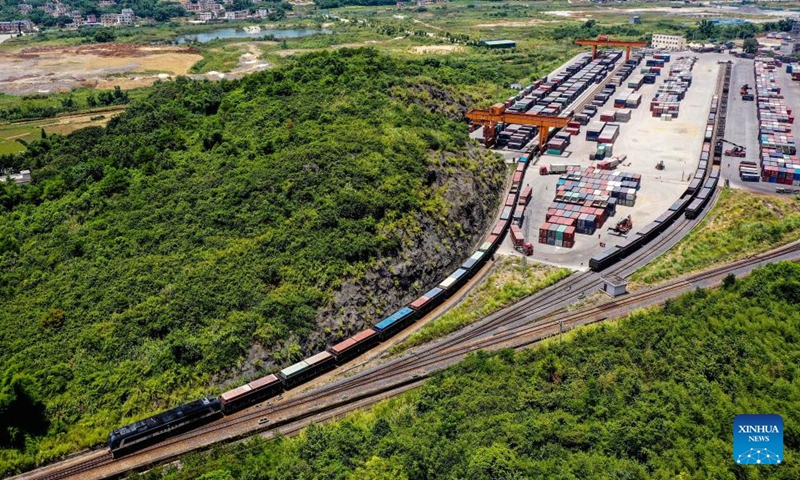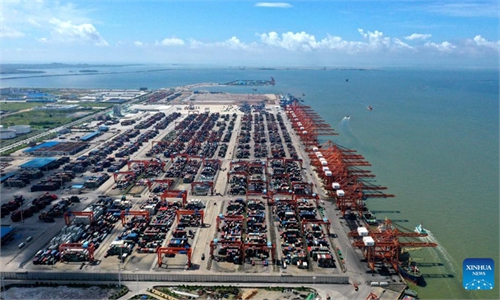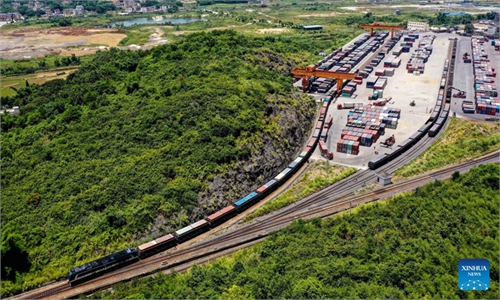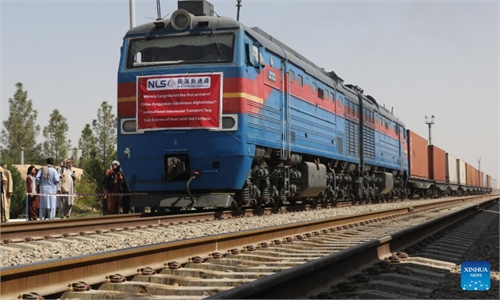
Aerial photo taken on July 29, 2022 shows an outbound freight train at a railway freight center in Wuzhou, south China's Guangxi Zhuang Autonomous Region. Launched in 2017, the New International Land-Sea Trade Corridor is a trade and logistics passage jointly built by western Chinese provinces and ASEAN countries. (Xinhua/Zhang Ailin)
The 7,000th freight train loaded with paper pulp, quartz sand and construction ceramics on Friday left the railway station at Qinzhou in South China's Guangxi Zhuang Autonomous Region bound for Chongqing municipality via the New Western Land-sea Corridor, China News Service reported on Friday.
The departure of the train meant that the goal for freight train services in 2022 was reached 71 days in advance.
Launched in 2017, the New International Land-Sea Trade Corridor is a trade and logistics passage jointly built by western Chinese provinces and Association of Southeast Asian Nations (ASEAN) members.
The extended logistics network reaches to 60 cities in 17 provinces and autonomous regions, covering all 12 provinces in the western region and part of the central region of China, the report said.
A group of provinces in western China signed a framework agreement on the new western land-sea corridor in October 2019. According to an overall plan by the National Development and Reform Commission, China aims to build an economical, efficient, convenient, green and safe land-sea corridor for the western regions by 2025, with rail-sea multimodal shipments reaching 500,000 standard containers a year.
In the overseas area, based on the three main arteries, the logistics network has linked 319 ports in 107 countries and regions in the past five years of development, according to the New Land-Sea Corridor Operation Co, the operator of the railway, and the number of categories has risen from about 50 in 2017 to more than 640.
Various goods including China-produced new-energy vehicles, Thailand-produced tapioca flour, Vietnam-produced rice and ASEAN-produced tropical fruits have been transported via the corridor.
Between January and August, China-ASEAN trade reached $83.9 billion, up 13.3 percent year-on-year, accounting for 16.3 percent of China's overall trade, data from China's General Administration of Customs showed.
In the first nine months of 2022, trade among China and other Regional Comprehensive Economic Partnership member countries through the corridor was 52,068 standard containers, accounting for 45 percent of the total foreign trade volume via the corridor, said the report.
Global Times



